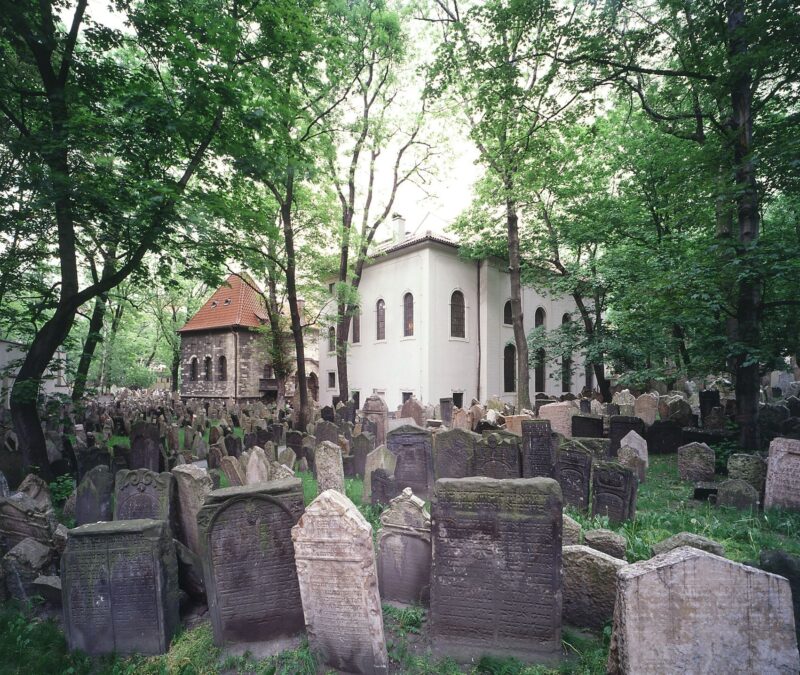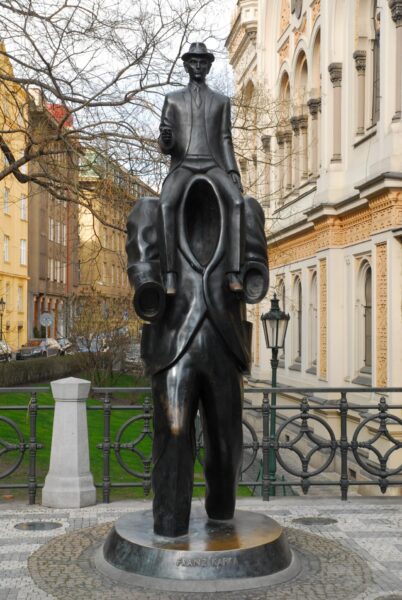Jewish Quarter
The Jewish Quarter is a strong reminder of Prague’s strong ties to the Jewish community. According to historic documents Jews have lived in the city since 970 C.E. By the end of the 11th century, a Jewish community had been fully established. During that period the first persecution took place at the hands of the Crusaders. In 1142 during the 2nd persecution, the oldest synagogue in Prague and sections of the Jewish quarter on the left side of the Vltava (Moldau) River near the castle were burned down.
In 1179, the church announced that Christians should avoid touching Jews. In this period, civil rights granted to Jews were severely limited and they were forced to build their community on the right bank of the Vltava, just north of the Old Town Square.
Although marginalized and victim of several pogroms over time (the worst of which nearly vanished the entire Jewish population in 1389) the community prospered and grew especially during the 16th century. During that era of Prague’s Renaissance, many expelled Jews from Germany, Austria, and Spain found refuge in the Josefov (name of the Jewish ghetto of Prague).
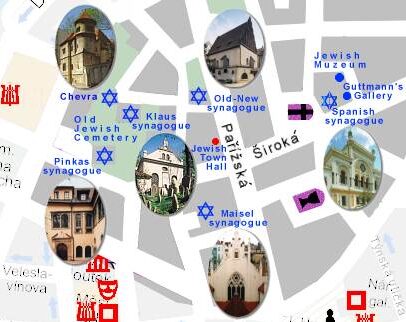
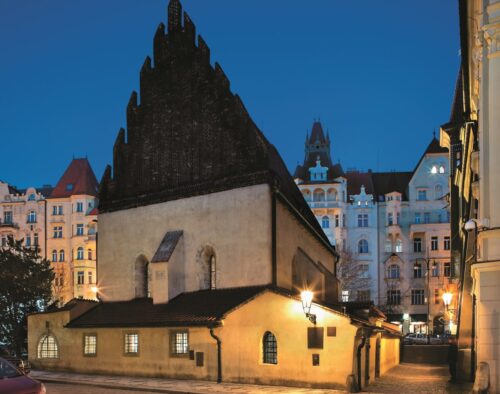
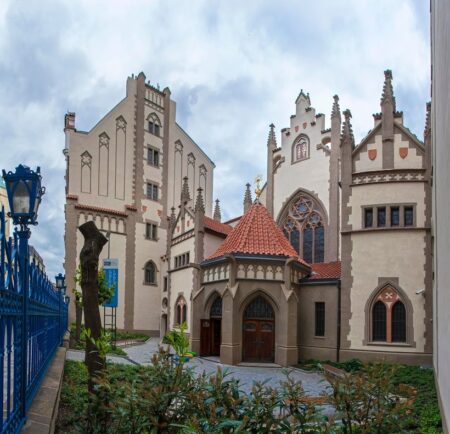
In the early 18th century, more Jews lived in Prague than anywhere else in the world. In 1708, Jews accounted for one-quarter of Prague’s population. However, the golden age ended with the ascension of Empress Maria Theresa who expelled the Jews from Prague from 1745 to 1748.
The Jews returned to Prague, the gates of the ghetto were opened, and conditions improved during the reign of Emperor Joseph II (1780-90) who issued the Edict of Toleration in October 1781. The edict affirmed the notion of religious tolerance. During the 19th century, Jews gradually became emancipated. In 1852 the ghetto was abolished and Josefov became a district of Prague. At the outbreak of World War II, over 92,000 Jews lived in Prague, almost 20 percent of the city’s population.
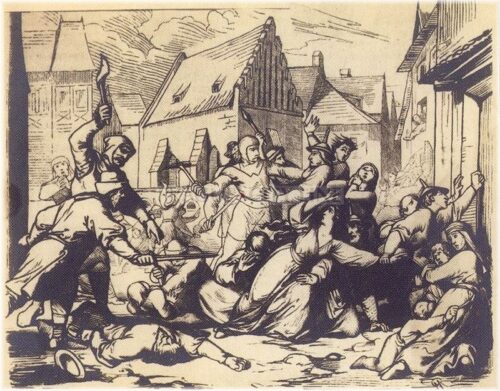
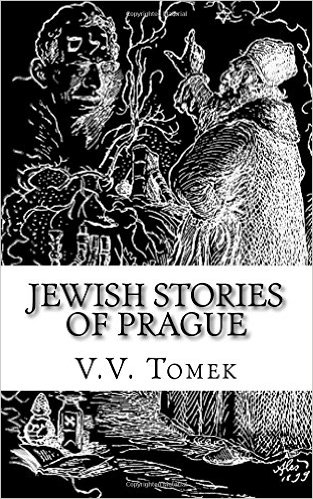

Prague was one of the largest Jewish communities in Europe. At least two-thirds of the Jewish population of Prague perished in the Holocaust, including 15,000 Czech Jewish children of which only 132 were known to have survived. Fortunately, most of the significant historical buildings were saved from destruction even by Adolf Hitler himself who decided to preserve the Jewish Quarter as a Museum of an Extinct Race. Indeed the Nazis gathered Jewish artifacts from other occupied countries, transporting them to Prague to form part of the museum.
Today six synagogues, out of which the Gothic Old-New Synagogue (Staronová synagoga), Europe’s oldest active synagogue and oldest preserved in Central Europe (built-in 1270), and the Moorish Revival Spanish Synagogue, the newest and most spectacular of all (in fact it is considered the most beautiful synagogue in Europe).
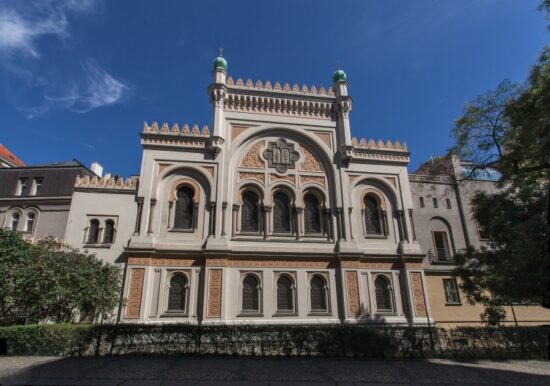
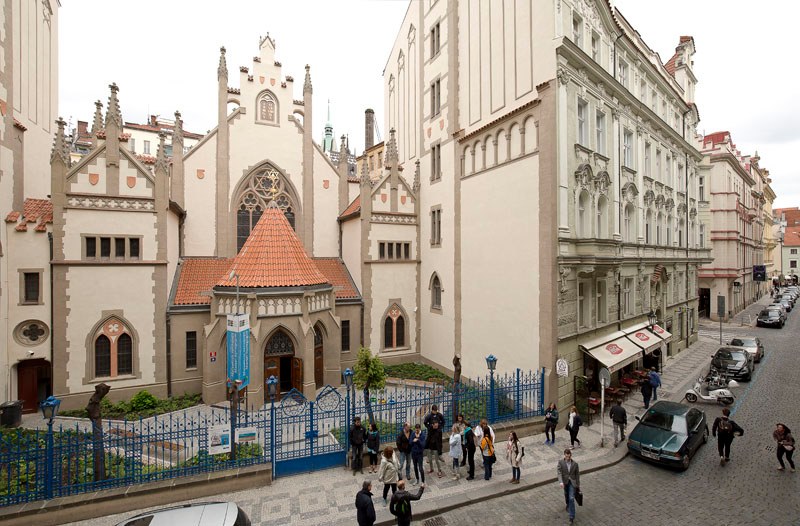
The list goes on with the Old Jewish Cemetery, one of the most remarkable burial grounds of its kind in Europe, the Old Jewish Town Hall, and of course the Jewish Museum, which houses a collection of approximately 40,000 artistic artifacts and 100,000 items of printed material, household ritual items, paintings, drawings, prints, manuscripts, and photographs, as well as artifacts from the Terezin concentration camp, all that visit the Jewish Quarter, one you must take if you want to truly embrace the city’s diverse past.
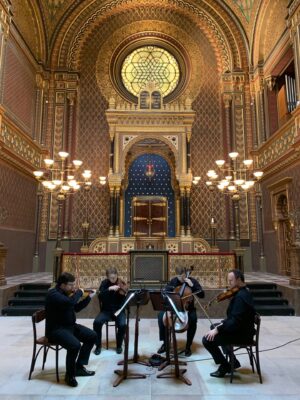

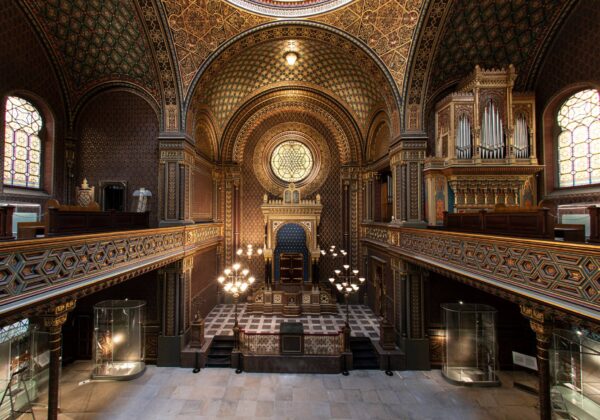
It is recommended to buy an all-sights-included ticket available in the Jewish Museum. In addition just a few steps away from the Spanish Synagogue where Dušní Street and Vezenská Street connect, within the spiritual triangle of three Churches of a different religions. Jewish, Catholic, and Protestant. Franz Kafka practically lived here his entire short life ( at Dušní Street No. 27). A sculpture memorial to the great writer stands today as a reminder. A tall, black, headless male figure in a suit with a somewhat smaller figure of Kafka sitting on his shoulders.
The 3.70 meters high creation is one of the newest additions to the city’s long array of sculptures, commissioned by Prague’s Franz Kafka Society in 2003. The artist Jaroslav Róna was inspired by the writer’s story Description of a Struggle. In this story “the author” explores a fictional landscape, mounted on the shoulders of ‘an acquaintance’ (who may be another aspect of the author’s personality) whom he eagerly & effectively spurs with kicks in the belly. In 2004 it was awarded the prize Grand Prix of the Community of Architects in the category of Visual Artistic Work in architecture.
